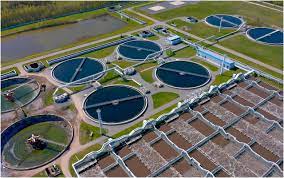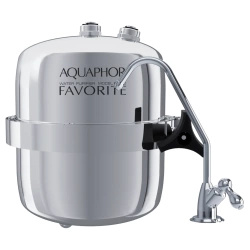 Wastewater treatment plants convert heavily contaminated water into water that can be reused by households and meets clean water standards. This process, called treatment, consists of several sequential steps. In a simplified model, four steps can be listed: sedimentation, coagulation, mechanical filtration and disinfection.
Wastewater treatment plants convert heavily contaminated water into water that can be reused by households and meets clean water standards. This process, called treatment, consists of several sequential steps. In a simplified model, four steps can be listed: sedimentation, coagulation, mechanical filtration and disinfection.
First step
Water treatment begins with sedimentation. The water, which usually comes from rivers, flows slowly through large sedimentation ponds. In those ponds, larger mechanical contaminants such as sand, clay and dust settle to the bottom. In the end, the water is less cloudy and in a basic way cleaned of large particles.
Step two
The next step of purification is coagulation. It removes lighter and smaller elements that did not sink to the bottom during the sedimentation process. With the help of a chemical compound, e.g. ferrous-aluminum sulphate, which has the appearance of a white powder, the contaminant particles are bound together into so-called „flocs”. This is where the common name for coagulation comes from: flocculation. The flocs, which are heavier than the individual particles they consist of, sink to the bottom of the pond more easily.
Step three
In the next treatment step, mechanical filtration, flocs and other mechanical impurities are finally retained. The mechanical filters contain gravel and sand membranes that remove the remaining undissolved mechanical impurities from the water. Those contaminants are referred to as sediments, suspended solids, sediments, turbidity or simply mechanical or undissolved parts/substances. After this step, there are no more contaminants in the water visible to the naked eye.
Step four
The final step is disinfection with chlorine. This step removes and inhibits the growth of pathogenic microorganisms present in the water. However, since chlorine in water can accumulate in the human body and cause many diseases, a more modern method of disinfection is used – ozonation. However, this method is more expensive and much more difficult than chlorination. Once the water is disinfected, it is ready to be sent to households. Despite the high degree of purification, there can still be dissolved chemical compounds left in the water (and even new ones such as ferrous-aluminum sulfate and chlorine derivatives that have been added during the disinfection process). In addition, the water can become contaminated with rust if the pipeline bringing it to the final consumers is corroded.
Conclusion
Water utilities treat water primarily from mechanical and biological contaminants. However, they do not remove dissolved chemical compounds from the water. For this purpose, an additional home water filter, operating on the basis of osmotic membrane, is necessary. Find out more about reverse osmosis water filters.

